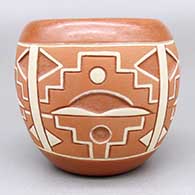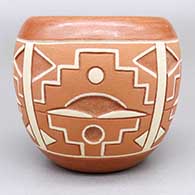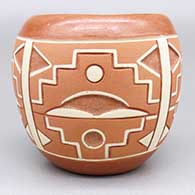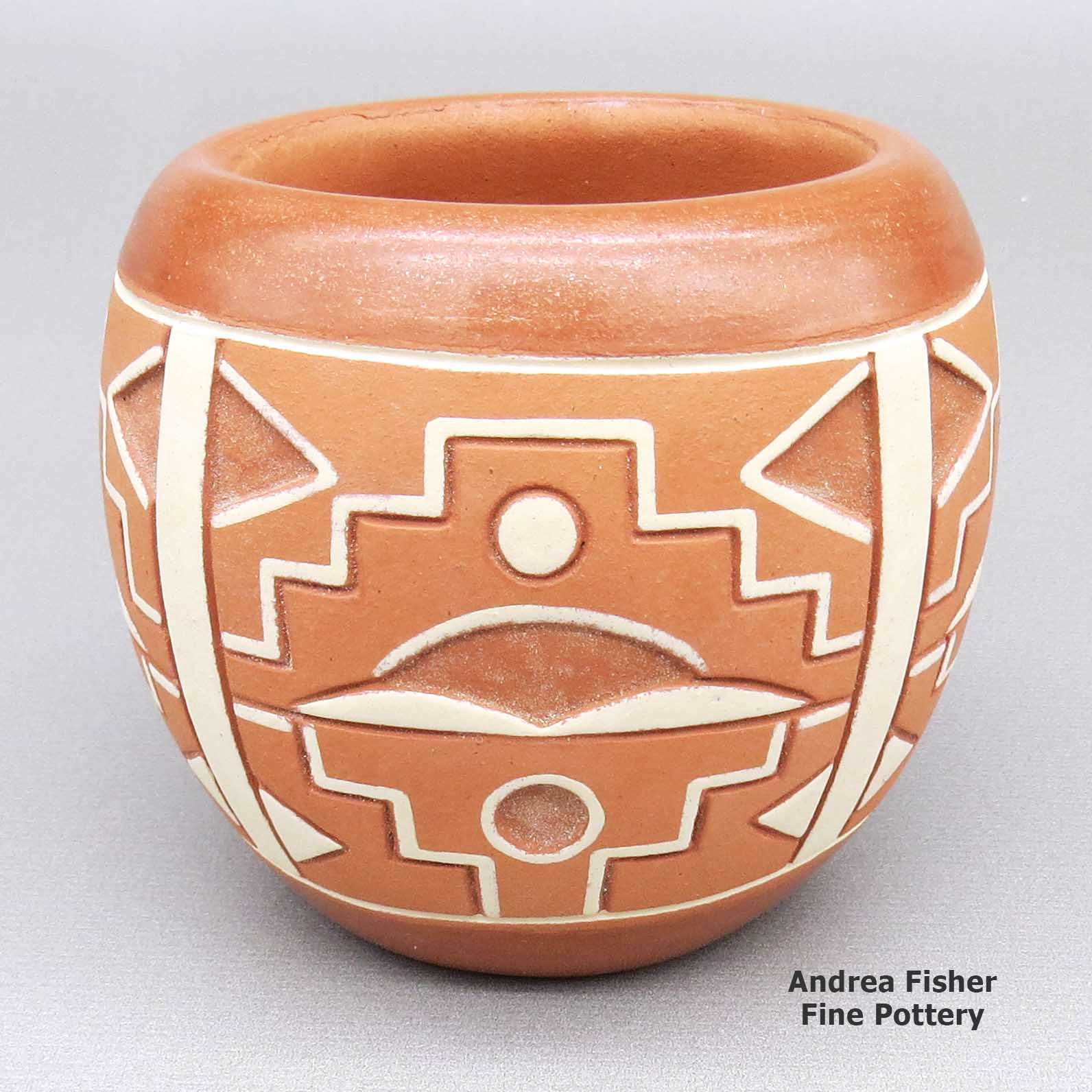
Ohkay Owingeh
$ 225
mvsj3b092m1
Polychrome bowl with a lightly carved and painted four-panel geometric design
3.25 in L by 3.25 in W by 3 in H
Condition: Very good, adhesive residue on bottom and normal wear
Signature: Norman de Herrera San Juan Pueblo N.M.
Tell me more! Buy this piece!
(505) 986-1234 - www.andreafisherpottery.com - All Rights Reserved
Norman de Herrera
Ohkay Owingeh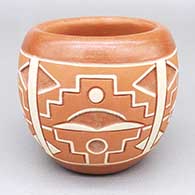
Norman de Herrera was the son of Rosita de Herrera. He learned how to make pottery as he was growing up, through watching and working with his mother. Throughout his career as a potter, he made Potsuwi'i pottery, just like she had showed him.
Ohkay Owingeh (San Juan)
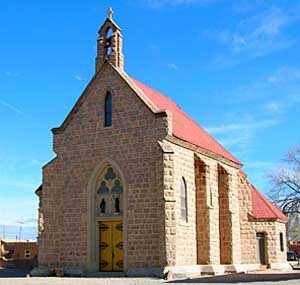
Ohkay Owingeh Mission
In 2005 San Juan Pueblo officially changed its name back to the original name (before the Spanish arrived): Ohkay Owingeh (meaning: Place of the strong people). The pueblo was founded around 1200 AD during the time of the great Southwest drought and migrations. The people speak Tewa and may have come to the Rio Grande area from southwestern Colorado or from the San Luis Valley in central Colorado.
Spanish conquistador Don Juan de Oñate took control of the pueblo in 1598, renaming it San Juan de los Caballeros (after his patron saint, John the Baptist). He established the first Spanish capitol of Nuevo Mexico across the Rio Grande in an area he named San Gabriel. In 1608, the capitol was moved south to an uninhabited area that became the Santa Fe we know today.
After 80 years of progressively deteriorating living conditions under the Spanish, the tribe participated in the Pueblo Revolt of 1680 (one of the revolt's ringleaders, Popé, was an Ohkay Owingeh native) and helped to expel the Spanish from Nuevo Mexico for 12 years. However, when the Spanish returned in 1692 that tribal unity had fallen apart and the individual pueblos were relatively easy for the Spanish to reconquer.
Today, Ohkay Owingeh is the largest Tewa-speaking pueblo (in population and land) but few of the younger generations are interested in carrying on with many of the tribe's traditional arts and crafts (such as the making of pottery). The pueblo is home to the Eight Northern Indian Pueblos Council, the Oke-Oweenge Arts Cooperative, the San Juan Lakes Recreation Area and the Ohkay Casino & Resort. The tribe's Tsay Corporation is one of northern New Mexico's largest private employers.
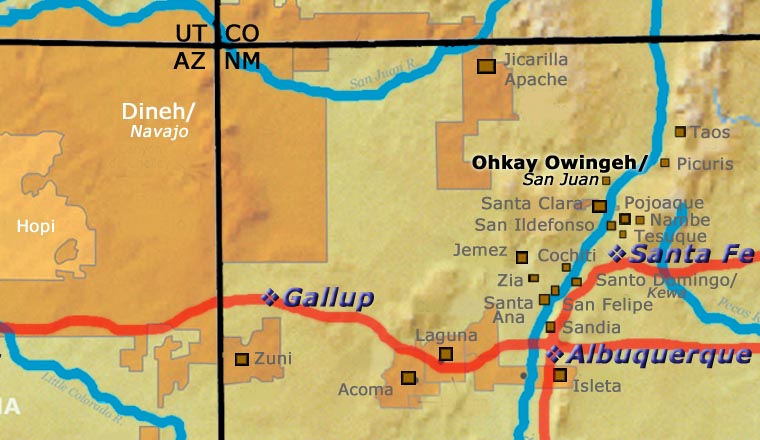
Ohkay Owingeh at Wikipedia
Pueblos of the Rio Grande, Daniel Gibson, ISBN-13:978-1-887896-26-9, Rio Nuevo Publishers, 2001
Tomasita Reyes Montoya Family Tree
Disclaimer: This "family tree" is a best effort on our part to determine who the potters are in this family and arrange them in a generational order. The general information available is questionable so we have tried to show each of these diagrams to living members of each family to get their input and approval, too. This diagram is subject to change should we get better info.
- Tomasita Reyes Montoya (1899-1978) and Juan Reyes Montoya
- Dominguita Naranjo (Sisneros)(1942-) and Juan Sisneros
- Jennifer Sisneros and Alfred E. Naranjo (Santa Clara)
- Alfred J. Naranjo
- Jeannette Teba and Steven Teba Sr.
- Steven Teba Jr.
- Veronica Teba
- Jennifer Sisneros and Alfred E. Naranjo (Santa Clara)
- Rosita de Herrera
- Norman de Herrera
Some of the above info is drawn from Pueblo Indian Pottery, 750 Artist Biographies, by Gregory Schaaf, © 2000, Center for Indigenous Arts & Studies
Other info is derived from personal contacts with family members and through interminable searches of the Internet.
Copyright © 1998-2024 by


